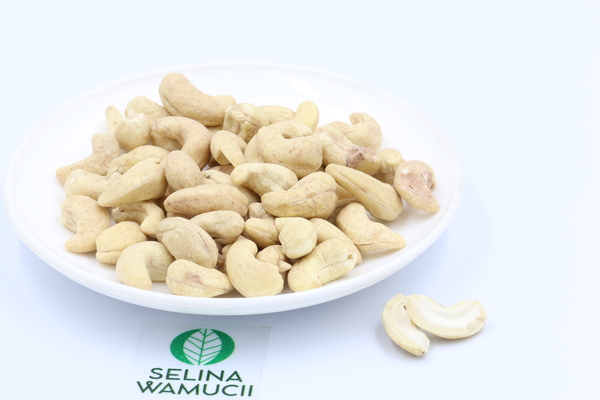Buy Guinea Bissau Cashew Nuts Directly From Exporters & Suppliers - Best of 2024 Market Prices
| Summary | |
|---|---|
| Varieties | W240 W320 W180 W450 |
| Size | 10mm-20mm |
| Season | April-June |
| Packing | Boxes, cartons, poly sacks 10-25kg, Vacuum packed |
| Storage | Dry, dark cool and airtight containers or warehouses |
| Transport Conditions | Cool, dry, ventilated containers |
Farming of Guinea Bissau cashew nuts is similar to land ownership in Europe during the middle ages. The largest the share of crop a farmer has, the more respect he commands. So plants translate into wealth. Besides, for most households, this cultivation serves as the most important source of monetary income. Cashew nuts are eaten as food and also used to make medicine.
The Portuguese planted the tree first in this West African nation in the 19th century. However, its cultivation was not taken up until in 1985 by small scale farmers. A.ocidentale is the 8-20m high evergreen cashew tree. It flowers green flowers that later turn red at three years and by the 8th year the plant is at full production. This period can last up to 20-30 years. The cashew nut is a kidney-shaped shell that contains the edible cashew. The cashew is 2-3cm. As the nut matures, a cashew apple is formed with the enlargement of the peduncle at the base. This apple has been termed a false fruit and is bell-shaped and fleshy.
Guinea Bissau holds the third position in terms of African exports of the product and is fifth in the world production chart. It had 150,000 tons’ export as of 2010. Cashew production accounts for about 87% of the country’s exports and 11.9% of the country’s GDP. The growing area for the country is 1400ha. The production zones are Biombo, Oio, Gabu, Cacheu, Bolama, Bafata and Quinara.
BPP-2 variety has a kernel grade of W450 and an 11kg per tree average yield. The nuts are small and have a weight of 4g. Vengurla-1 has a yellow apple, a kernel grade of W240 and a 19kg per tree average yield whereas Vengurla-2 has a pinkish-red apple with a W320 kernel grade and a yield of 24kg per tree.
Guinea Bissau cashew nut grows at 1000m altitudes and a mean range of 17°c-38°c in temperature. A nice distribution of 500-3500mm rainfall and deep and fertile sandy soils also part of the requirements for healthy produce. The tree can adapt to dry conditions because of its extensive roots, but frost destroys it.
After the late May to early November rainy season, the cashew trees are able to absorb nutrients from the soil. They then bloom in January and February, and the blossoms turn to cashew fruits that get harvested between April and June.
During harvest, the farmers pull the cashew nuts that usually grow nested against its fruit, from the trees. The nuts are roasted, deshelled and packed in sacks. The raw cashew nut gets taken to town warehouses where they are dried and bagged and sent to exporters who may rebag them or not and then they get exported. The nuts are stored in an airtight container that is cool and dry and in shipping require cool, dry and ventilated conditions.
The apple cashew fruit gets pressed, and the seeped liquid is stored to ferment wine or make juice. The pulp, on the other hand, is dried to make feed for livestock
Most of the Guinea Bissau cashew nuts are exported raw to India, China and Vietnam to undergo processing. The rest is transformed into grilled snacks and biscuits at home by family firms.
Our platform offers the secure purchase of Guinea Bissau cashew nuts as well as other agricultural products. Sign up and join us today.
Get Instant Quote
Are you a producer of Guinea Bissau Cashew Nuts or other products?
Sign up today for FREE to buy or sell Guinea Bissau Cashew Nuts.





